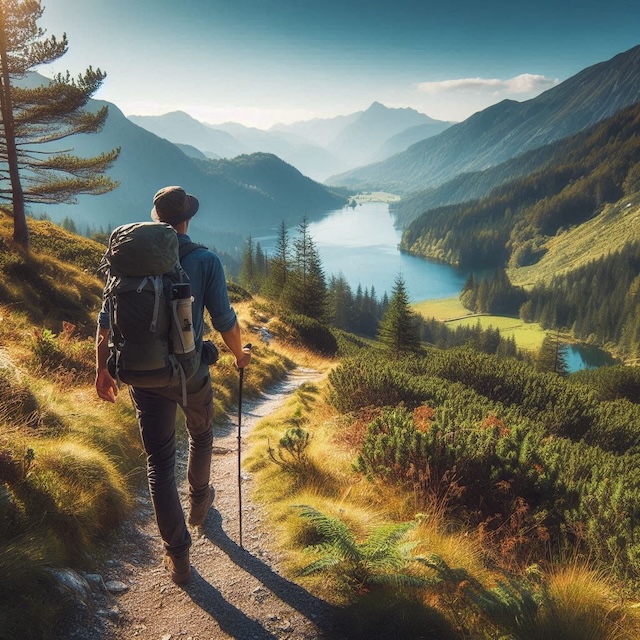Backpacking immerses you in the raw beauty of nature, testing your limits and offering unparalleled peace away from the clamor of everyday life. It’s a pursuit that attracts both eager beginners hungry for their first taste of wilderness adventure and hardened trekkers craving their next challenge. I fully grasp that the complexity of the task – choosing the right gear – can either make or break your experience. In this introduction, I’m taking you through the why and how of selecting the quintessential piece of equipment: the backpack.
The backpack you choose is your most faithful companion on any trail. It’s no exaggeration to say that finding the ideal pack is critical. It’s about more than just hauling your essentials; it’s about merging comfort with functionality, ensuring everything you need is both accessible and secure. Both newcomers and experts share this common ground: the need for a backpack that won’t let them down when they venture into the great outdoors.
With that in mind, this guide is crafted to be comprehensive, offering insights for anyone interested in backpacking, regardless of their experience level. So, let’s get to grips with what you need to consider when selecting a backpack – without oversimplifying or complicating the journey. Consider this as your stepping stone to confidently stepping out on the trail, equipped with knowledge as well as gear.
Key Features to Consider in a Backpacking Backpack

Imagine you’re miles away from civilization, surrounded by nature’s splendor – your backpack is your lifeline. It houses your essentials: shelter, food, clothing, and more.
That’s why choosing the right one isn’t just about preference; it’s about practicality and functionality.
How much can it hold? Capacity is measured in liters, and your trip length dictates the size you’ll need. Weekend trips usually call for 30-50 liters, while week-long adventures might require 50-70 liters. Consider not only the duration but also the season and gear required.
Comfort is paramount. A poorly fitting backpack can turn an exhilarating trek into a painful ordeal. Pay attention to torso length and hip size; these are critical for a snug fit. Most high-quality packs offer adjustable harnesses to fine-tune the fit to your body.
The material of the backpack will determine its resistance to wear and tear. Typically, nylon and polyester are go-to choices for durability and water resistance. However, don’t overlook the zippers, buckles, and seams – these should be sturdy enough to endure constant use.
Organization can make or break your trip. Internal compartments and easy-access pockets help maintain order and efficiency in the wild. The more compartments, the easier it is to find what you need without emptying your whole pack.
Weight is a trade-off. You want a bag that’s strong enough to carry your items but not so heavy that it adds unnecessary strain. Advanced materials offer the best of both worlds: durability without the weight.
Remember, the right backpack will serve as a home away from home. Make a wise selection, and it will amplify your adventure, blending functionality with the joy of the outdoors.
Advanced Tips and Considerations for Backpack Selection
Choosing the suitable backpack goes beyond just size and fit; you must consider several additional factors to ensure you’re well-equipped for the trails. I encourage you to look into the adjustability of the backpack. Modular components, like removable hip belts or adjustable shoulder straps, mean one pack can suit various body types and trip lengths.
Next, pay special attention to the design focused on back health. Adequate ventilation and padding can prevent overheating and discomfort during long hikes. A backpack with a good suspension system will distribute weight evenly, which is vital to avoid unnecessary strain.
Most modern backpacks come with hydration system compatibility, often overlooked until you’re on the trail and in need of water. Check for integrated hydration sleeves and ports, and ensure they align with your hydration preferences.
The integrity of a backpack brand, its reputation, and the warranties offered are factors that shouldn’t be thrown into the wind. Your backpack is an investment in your backpacking future. Opting for a brand that stands behind its product can save you from future headaches.
Before making that final choice, I advise reading through various user reviews and, if possible, visiting an outdoor gear store to get professionally fitted. Remember, the knowledge shared by those who’ve trodden the path before you can be invaluable. Aligning your choice with real-world experiences will prepare you for a fulfilling backpacking adventure.
In compliance with the FTC guidelines, please assume the following about links and posts on this site: Any/all of the links fourseasonshiking.com are affiliate links of which I receive a small compensation from sales of certain items.
https://osprey.pxf.io/c/5564501/1765694/20745

Find Your Backpack, Click on the Link Above
Learn More, Click on the Link


Great breakdown of what to look for when choosing a backpack! I found your tips on size and fit especially helpful—those are things that are easy to overlook but make such a difference on the trail. I’ve been considering upgrading my current pack, but I’m torn between going for a lighter model or one with more storage options. Do you think it’s better to prioritize weight or storage capacity for multi-day hikes?
On multi-day excursions, you will need capacity, however, prioritizing comes with choosing between things needed and things not needed.
Sincerely, Lonnie